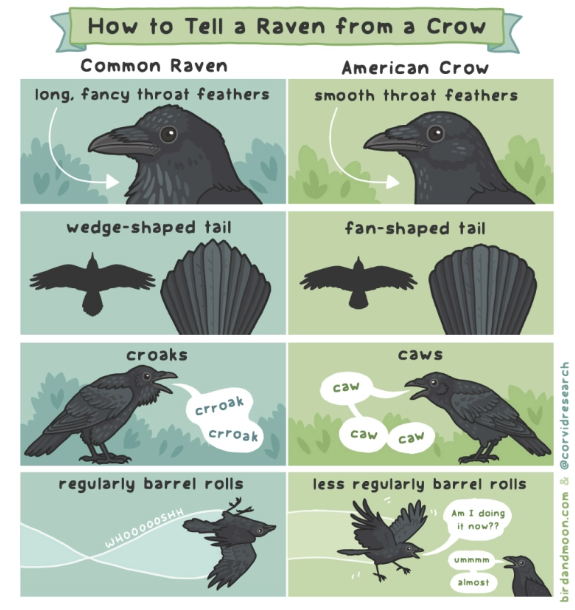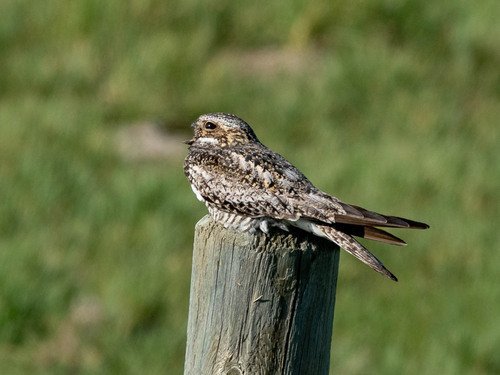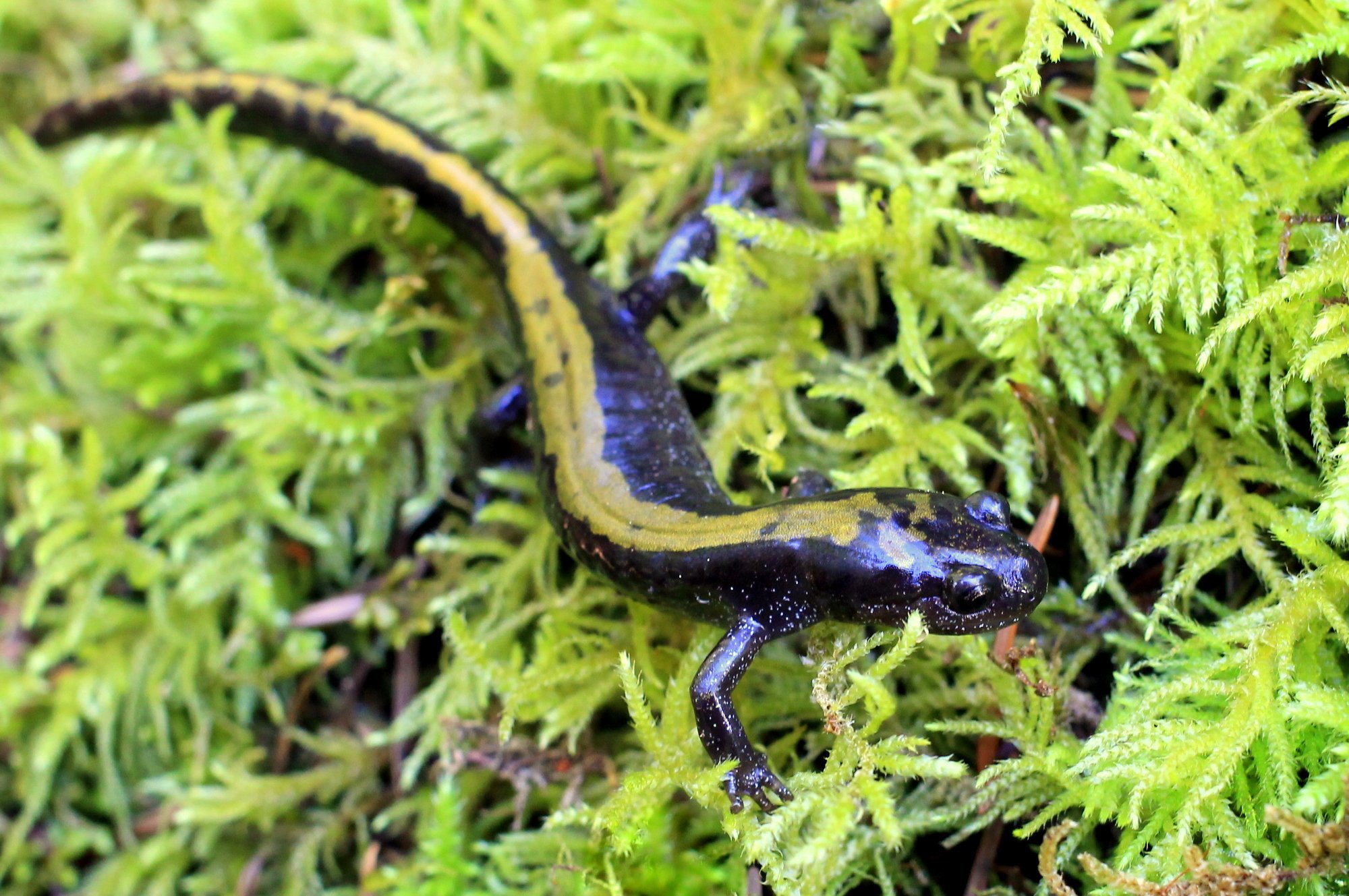Owls in the Winter - What a Hoot!
Spotting owls in Alberta during the winter is a thrilling experience, as several species, including the great horned and snowy owl, remain active in open or edge habitats despite the cold. Their presence in our snow-covered landscapes adds an enchanting and mysterious element to the province’s winter wildlife. Read on to learn more about four owl species commonly seen in Alberta throughout the winter!
Distinguishing the American Crow and Common Raven
As biologists and environmental scientists, even we sometimes mix up the American Crow and the Common Raven. They are remarkably similar, but with a bit of practice, you can tell them apart. Here’s how to differentiate these two members of the Corvid family.
Cackling Goose (Branta hutchinsii) vs. Canada Goose (Branta canadensis)
Identifying a Cackling Goose from a Canada Goose can be challenging, but with careful observation and a few key pointers, you’ll be able to distinguish between these two species with ease. These two geese may look similar at first glance, but they have distinct characteristics and behaviors that set them apart. By understanding these differences, you can enhance your bird-watching experience and appreciate the unique traits of each species.
Swallows of Alberta - Quick ID Guide
Although it may be easy to pick out the differences between these species when you’re comparing them on a page, it is much more difficult to accurately identify these birds in the field. The birds above are all swallows. From the family Hirundinidae, swallows are typically insectivorous and agile flyers (Sibley 2016, 305). There are six swallow species you can find throughout Alberta: Bank Swallows, Tree Swallows, Cliff Swallows, Barn Swallows, Northern Rough-Winged Swallows, and Violet-green Swallows (Sibley 2016, 306-309). The most common swallows, Bank, Tree, Cliff, and Barn Swallows, typically breed in North America and winter as far south as Argentina in the Cliff Swallow’s case (Sibley 2016, 306-309: Cornell University, 2024a). Here are some common ID tips you can use in the springtime, when these frequent flyers come around!
Here Be Dragons
Most AJMers would agree that one of the best parts of our jobs is spending time out in nature, getting the chance to see wildlife up close. We often focus on vertebrates, but it's hard to forget that the animal world is mostly insects when we visit a site as diverse and full of bugs as a wetland.
A Helping Hand: Updates to the Migratory Birds Regulations
Migratory birds are true global citizens. They do not recognize international borders, belong to a specific country, or call only one place home. Just as humans do, these birds follow good weather and food availability across great distances. In the spring and summer months, thousands of birds make the trip up to Canada to nest, mate, and raise their young.
The Not-So-Common, Not-A-Hawk
Each spring, as the ice begins to thaw, the forests, wetlands and prairies awaken to the sound of birdsong, brought by hundreds of migratory bird species arriving home to their summer breeding grounds.
Species Spotlight: Long-toed Salamander
Under the cover of darkness, a small, sleek amphibian emerges from beneath ground cover. Part of the mole salamander family, the long-toed salamander (Ambystoma macrodactylum) is mostly nocturnal and spends much of its time hidden under rocks and woody debris in boreal habitats and montane basins …
Sounds, Like a Good Idea
lthough many of us have appreciated the melody of birdsong, the buzzing of insects, and the noises of wildlife, we might not realize just how unique and important these sounds are. Across the globe, scientists, naturalists, and wildlife aficionados tune into wildlife sounds to inventory species …
Who’s Who in That Pool?
As spring sweeps into Alberta, ice thaws, snow melts away, and seasonal rains and flurries fall, all across the province waterbodies fill and wetlands come to life. Many of us will turn our eyes skyward watching flocks of birds wing their way north from their winter refuges, but from under the fallen leaves, rocks, holes …
A Glimpse Into Marine Turtle Conservation: Shelling Out Some Love (and Facts!) for the Majestic Marine Turtle
It is winter here in Alberta, Canada and we are dreaming of warmer temperatures.
To turn the thermostat up a few notches, AJM’s Biologist, John Rich, transports us to the remote beaches of the Turkish Republic of Northern Cyprus in this latest post about his past work with endangered Marine Turtles!
What the Duck? Why Waterfowl are Essential to Wetlands
Wetlands provide vital habitat for an abundance of aquatic and terrestrial species, including, migratory waterfowl (ducks, geese, and swans).
Many of these important wetland ecosystems can be found nestled within the Prairie Pothole Region (PPR) of Alberta, Saskatchewan, and Manitoba in Canada, as well as North Dakota, South Dakota, Iowa, Minnesota, and Montana in the United States. So it almost doesn’t come as a surprise that the PPR provides suitable habitat for almost 50% of all North American migratory waterfowl populations to feed, breed, and stop-over during migration movements!
Ord's Kangaroo Rats - Alberta's Nocturnal Ninjas
Ord’s kangaroo rats are an amazing species, trust us, we could wax poetic for hours about their cute appearance and incredible adaptions. Instead, welcome to K-rat 101, an introduction to the wonderful world of Alberta’s nocturnal ninja. With no close relation to the invasive Norway rat, nor the leggy marsupials from Australia, the Ord’s kangaroo rat is part of a distinct group of rodents specially adapted to life in hot, arid environments.
Snakes in the Grass
Alberta’s grasslands are an iconic eco-region and productive both agriculturally and industrially. These rangelands are home to some of Alberta’s most charismatic wildlife species like the burrowing owl, sharp-tailed grouse, pronghorn antelope, and the majority of our resident snake species. Snakes live the majority of their lives unseen and …
Hop to It: Working with Amphibians
Alberta is home to an impressive variety of flora and fauna. One of the fauna groups that often tends to get overlooked are amphibians. Amphibians are animals that have life stages that occur both aquatically and terrestrially. One of their most prominent features is their permeable skin that allows them to regulate moisture and gas exchange (breathing!). This awesome adaption also leaves them prone to impacts from pollution …















